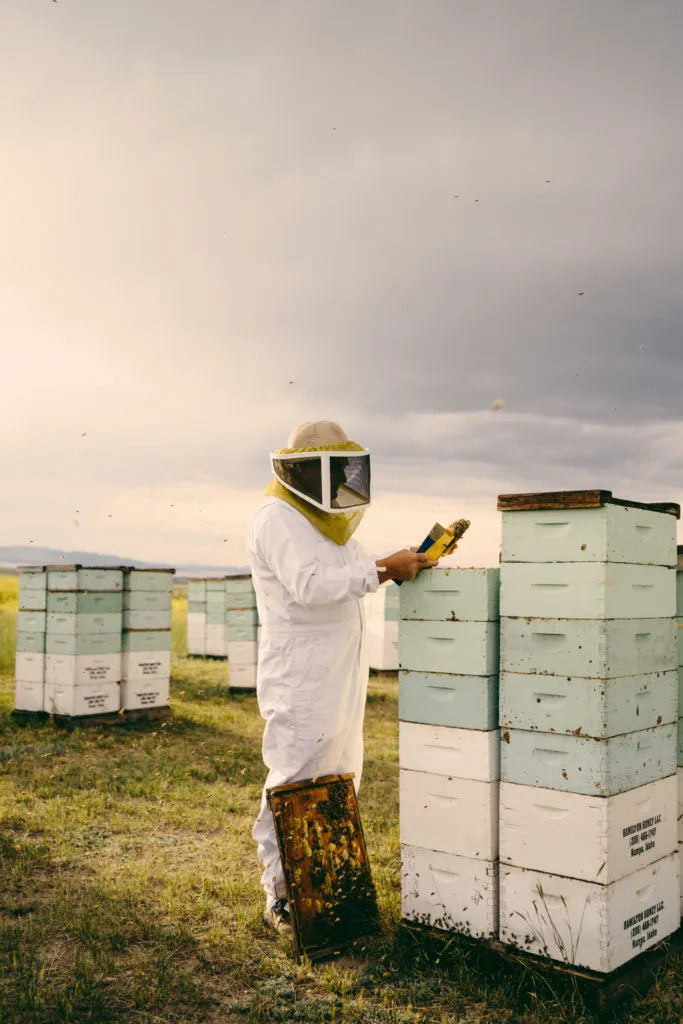Beekeeping’s Peak Season
Beekeeping
Monday marks the first day of fall, which means that while the weather might be cooling down, beekeeping season is heating up at our hives around the country. At this very moment, our beekeepers are busy harvesting plenty of honey, and then – critically – doing nothing to it, keeping it raw & unfiltered, with all the nutrients and rich floral notes the bees put inside.
So, what does a honey harvest entail? The sweet, sweet culmination of months of work. Bees spend spring through early fall building up their honey stores; filling all those honeycombs is backbreaking work – or at least it would be, if bees had backs. (They’re invertebrates.) Throughout the warmer months, queens delicately balance the number of bees in the hive. It’s up to the queen to make sure there are enough worker bees out gathering nectar for honey, but not so many that the hive won’t make it through winter.
Beekeeping is also a delicate balance. The beekeepers’ job is critical and can make the bees’ lives easier, but they can also disrupt the day-to-day activities of the hive with too many check-ins. During the spring and summer, the key is usually stepping back and simply letting the bees make their honey in peace. In the fall, beekeepers have a lot more responsibility on their shoulders. As with other forms of agriculture, fall is when they finally begin to see the fruits of their labor. It’s up to the beekeeper to wait until just the right moment to harvest, making sure the conditions are right for the honey to taste its best and for the hive to make it through the winter. Beekeeping follows the seasons and daily temperature closely, so beekeepers have to constantly check the weather to make sure they’re on schedule and ready for the coming season. Though the exact timing varies in different regions, September is when American beekeepers harvest most of the 157 million pounds of honey they produce each year.
During September, beekeepers have to smoke the bees out of their hives, remove each frame of honey, uncap the wax-sealed honeycombs and finally, actually extract the stuff, which is plenty complicated. As if that weren’t enough, beekeepers also have to protect and prepare their hives for the coming winter: checking for diseases, combining multiple hives into one, providing food for the winter and weatherproofing hives so they’re ready for cold snaps.
Making raw and unfiltered honey is a tough job – especially in September – but it’s always worth it when we get to taste the results: 100% pure, raw & unfiltered honey.

